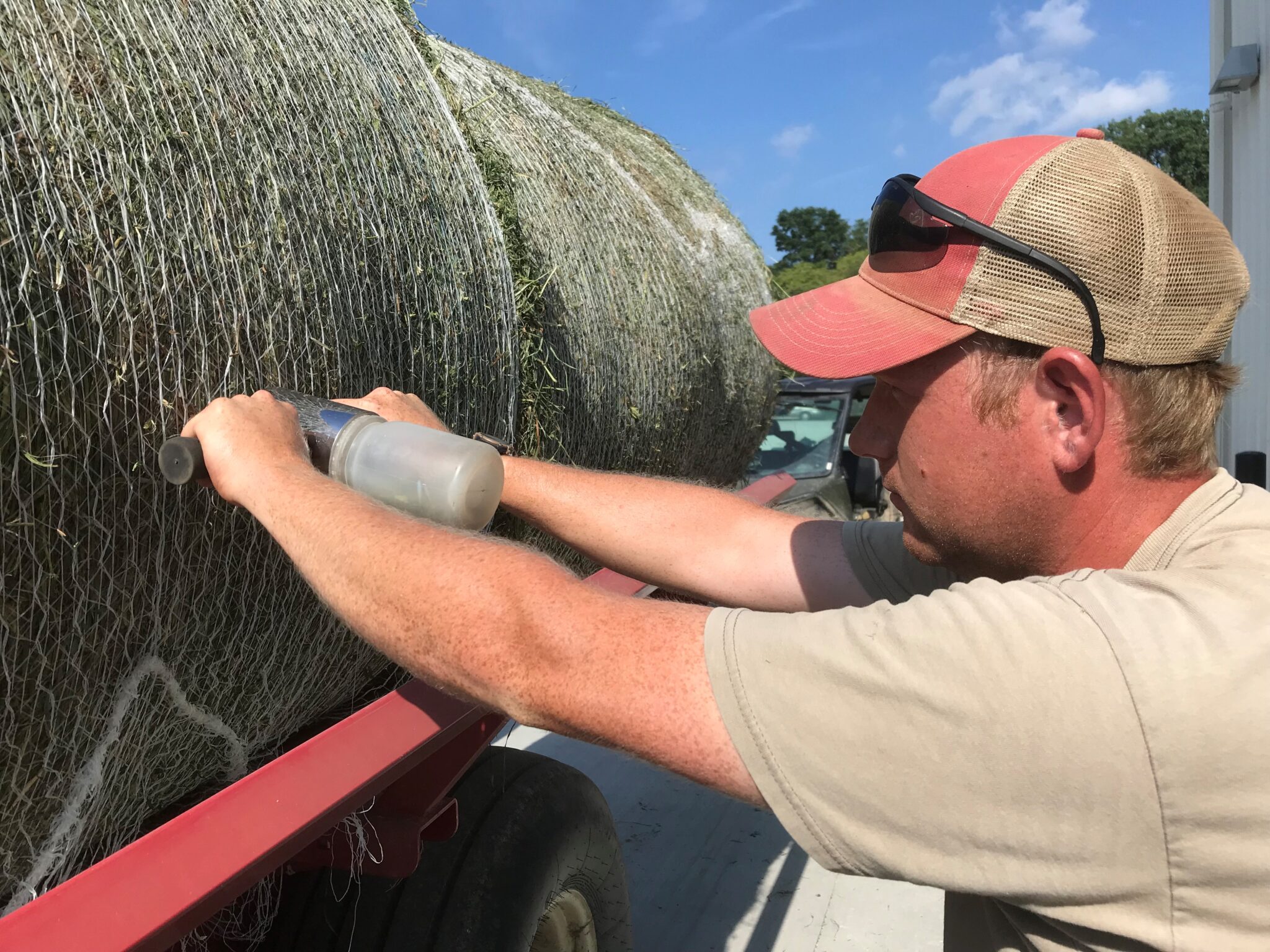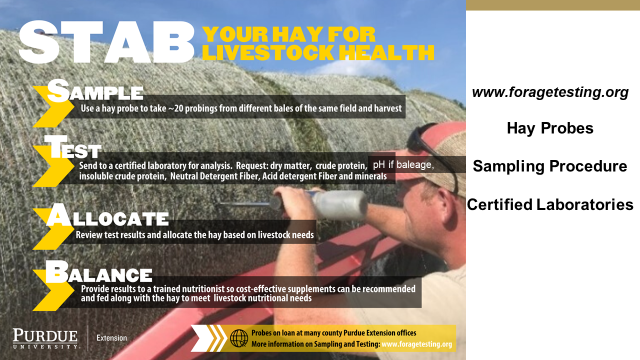Hay harvest will soon be coming to a close for another year. It is important to now follow through and Sample, Test, Allocate, and Balance or STAB your hay. Doing the STAB is an important best management practice to keep your livestock healthy.
Sample – Hay from each harvest from a field should be sampled with a hay probe. Many Purdue Extension offices have a hay probe to loan to sample hay. The website foragetesting.org has a list of hay probes that can be purchased for sampling hay. Twenty probings comprise a sample. Ten large bales are sampled twice on opposite sides of the curvature of a round bale and each butt end of a rectangular bale. One probing is taken from one butt end of each of twenty small rectangular bales to comprise a sample. Probings should be placed in a clean plastic bag that can be sealed to retain moisture. Mark the plastic bag with the forage type(s), location harvested, and cutting number.
Test – Certified laboratories can be found at foragetesting.org. A basic test will suffice in most cases. A form from the laboratory should accompany the samples and it is likely available at the laboratory website. Minimally, request moisture, crude protein, adjusted crude protein, Neutral Detergent Fiber (predicts dry matter intake), and Acid Detergent Fiber (predicts digestibility). If the forage was harvested as baleage, request pH, too. Mineral analysis should be requested if a total mixed ration is fed to livestock. A test can be done by wet laboratory or Near Infrared Reflectance Spectroscopy (NIRS) methods. The advantage of NIRS analysis is it takes less time to process the sample and the test will cost less.
Allocate – Results received from the laboratory should be reviewed by a trained livestock nutritionist and you. Based on these results, each harvest will be allocated to the class of livestock that the analysis best meets nutritional needs. Growing livestock and females in early lactation will require the best quality hay harvested.
Balance – Utilize the service of the livestock nutritionist, or acquire the knowledge and ability, to balance rations to meet nutritional needs that the hay cannot provide alone. Purdue Extension Educators may know individuals that have the skill to balance rations to keep livestock in excellent health.
You have worked hard to get hay made and in storage this year. Follow through so it can be used to best advantage to keep your livestock in proper body condition so performance is not compromised.




